
[ad_1]
Monsteras are one of the iconic indoor houseplants in the present day and for good motive. They’re an attention grabbing, low-maintenance tropical plant that appears nice in any house. Our monsteras are nonetheless low and bushy, however they’re climbing vegetation that may develop tall & tree-like too. Right here’s why we selected this simple plant for our residence.

The genus monstera contains over 50 completely different species of vegetation, most identified for his or her giant “monster” leaves with distinct holes and cut up edges. Right this moment we’ll speak about the most well-liked houseplant number of monstera: the monstera deliciosa.
What Is A Monstera Deliciosa?
Monsteras are native to the tropical environments of Central America, particularly Mexico. Their giant, distinct leaves are a pure adaptation to outlive within the rainforest. The splits and holes in its leaves (known as “fenestrations”) permit the plant to develop bigger with out getting too heavy, whereas additionally permitting daylight and rain to succeed in decrease elements of the plant.
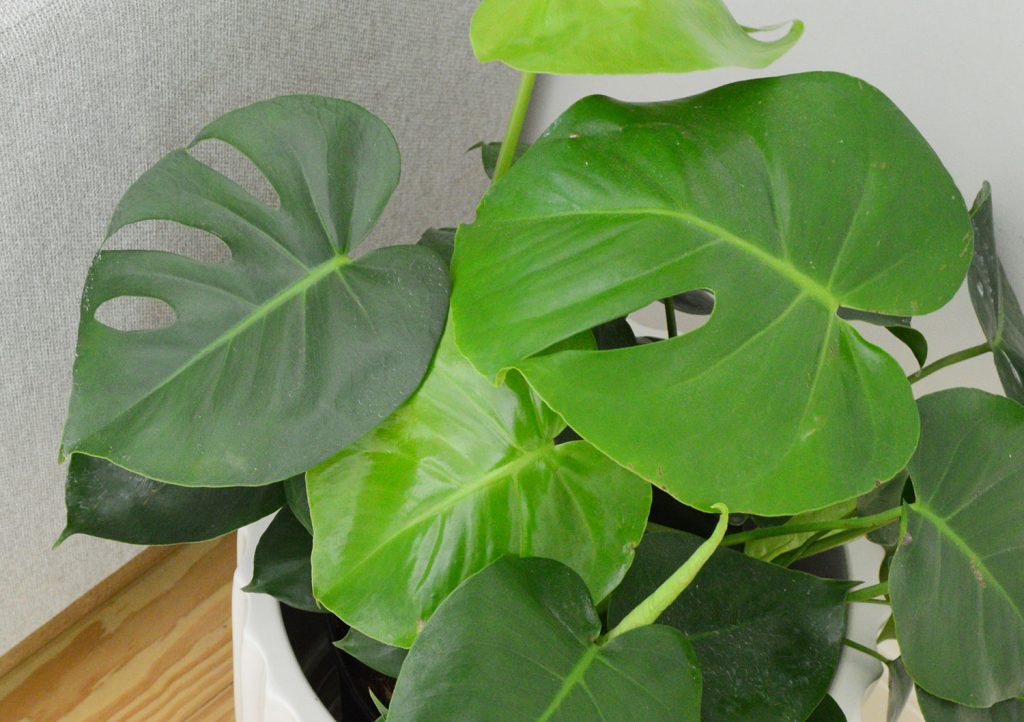
Within the wild, monstera vegetation additionally develop tasty fruit (that’s the place the “deliciosa” a part of its title comes from) however they hardly ever produce fruit as indoor houseplants. It’s additionally thought of an epiphyte, that are vegetation that develop on or up different vegetation, like timber, with out harming its host. Pothos is one other fashionable epiphyte houseplant. That’s why many individuals use stakes to offer their monsteras one thing to climb.
Monstera Deliciosa vs Break up Leaf Philodendron
Monstera deliciosas are additionally known as “Swiss Cheese Vegetation” or “Break up-leaf Philodendrons.” Nevertheless, a monstera just isn’t a philodendron and that title may cause it to be confused with a Tree Philodendron. These are two solely completely different houseplants typically bought below the Break up Leaf Philodendron title. As you’ll be able to see beneath, a monstera’s leaves are typically glossier and fewer frilled alongside the perimeters.
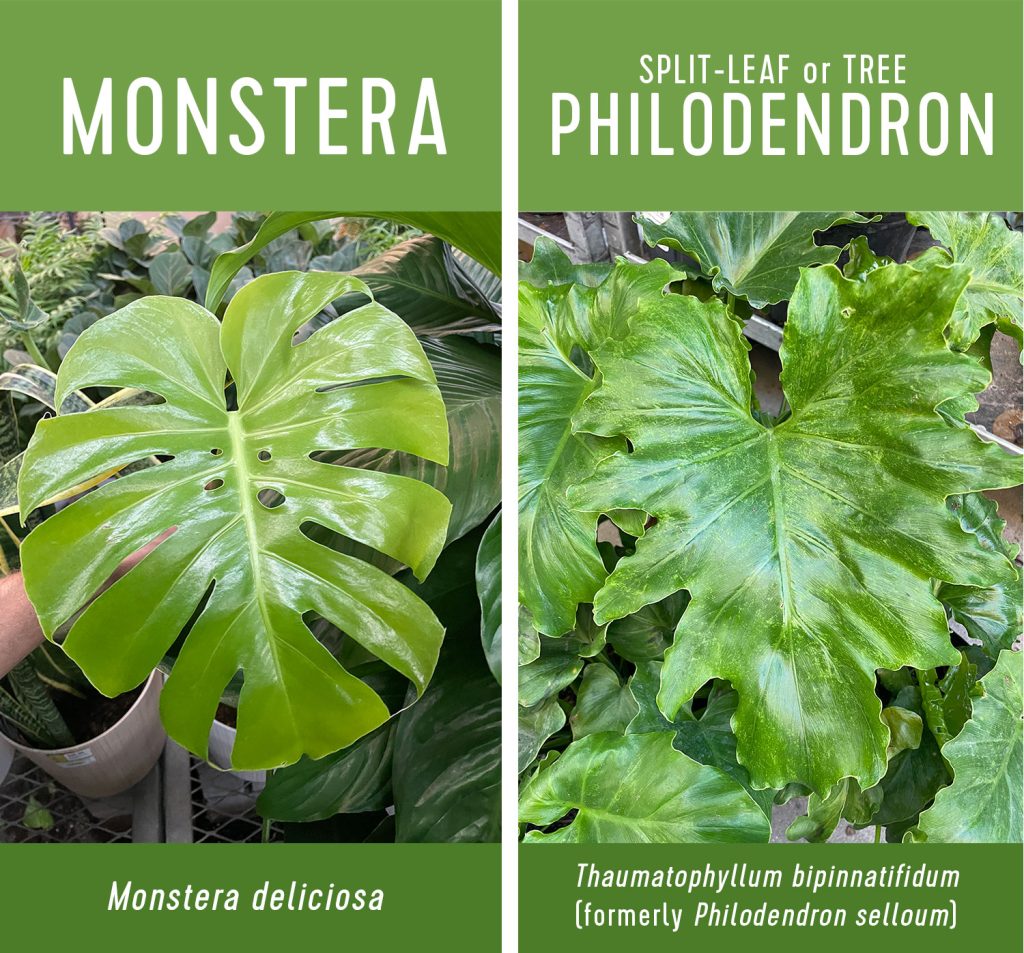
These visible distinctions could also be much less apparent in youthful or smaller vegetation, so we beneficial double-checking the label or itemizing for the plant’s scientific title. That approach you’ll get the “split-leaf philodendron” you needed!
How one can Care For Monstera Deliciosa
We now have no persistence for finicky or troublesome houseplants, which is why we love having monsteras! They’re simple to look after and develop comparatively quick, making them a rewarding plant to have round.
Gentle & Placement
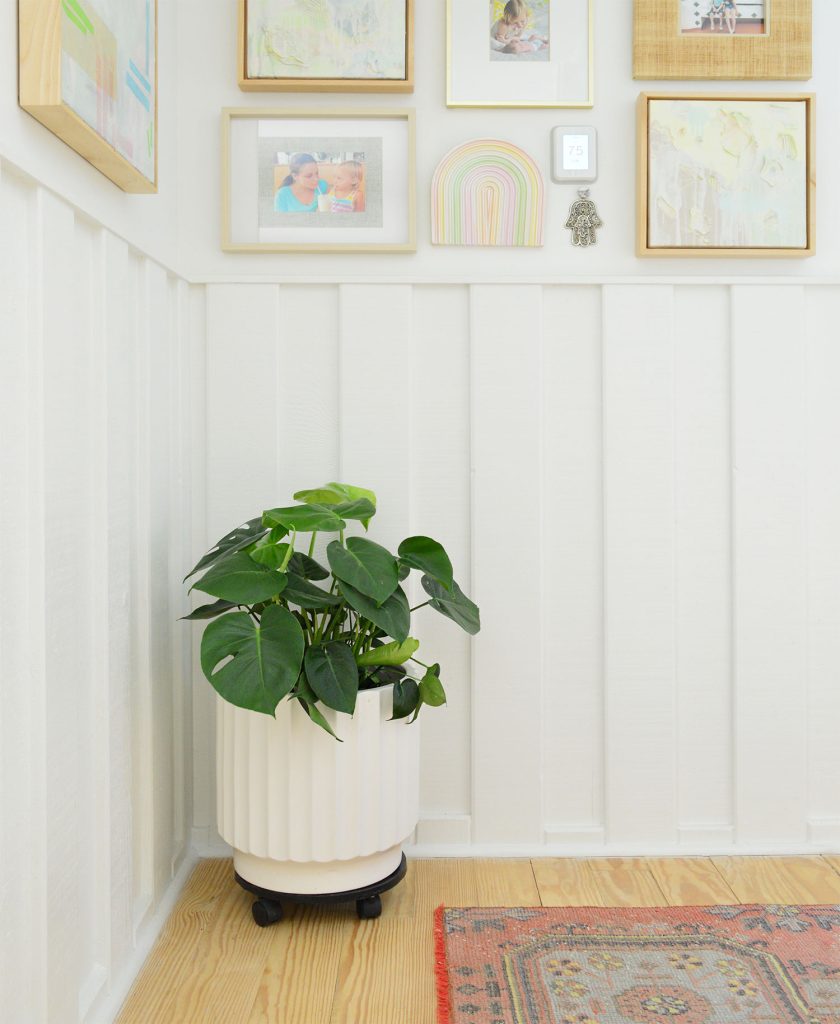
Monsteras choose medium oblique daylight however can adapt to a spread of lighting conditions. Simply keep away from direct daylight as a result of it may well burn the leaves. We now have one thriving in a comparatively low-light hallway, however you might have considered trying a location with partial or dappled daylight should you’re attempting to encourage faster progress.
Watering Your Monstera
Monsteras sometimes solely want watering each 1-2 weeks throughout their rising season (spring & summer season). As a result of they’re rainforest vegetation, monsteras are accustomed to dry spells between heavy rains. So don’t fear in case your soil totally dries out between waterings. You too can house out your watering even additional within the fall & winter.
Humidity & Misting
Monsteras love humidity, due to their tropical origins. An indoor humidity of 50-60% is good, which implies they may do effectively in most residence environments. You may at all times maintain it close to a conveyable humidifier or evenly mist the leaves between waterings to encourage progress.
Cleansing Leaves
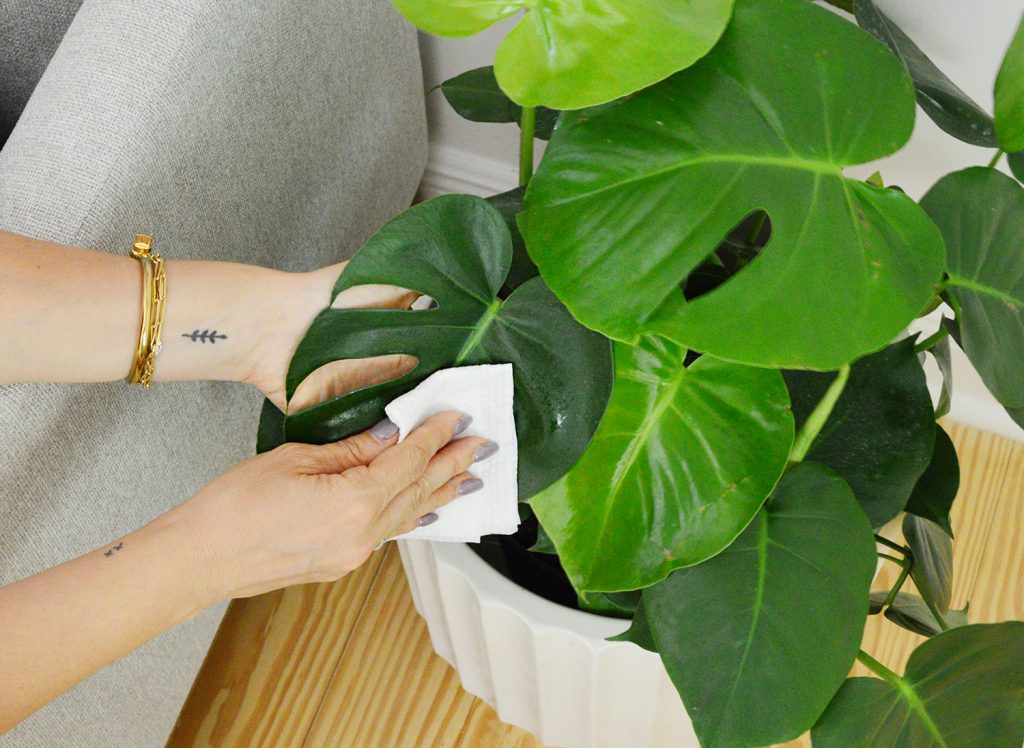
Contemplate wiping or dusting your monsteras leaves with a moist fabric as wanted. This helps it look its finest, whereas additionally permitting extra daylight onto its floor. You too can buy plant wipes or spray to actually make them shine!
Repotting a Monstera
Your monstera will probably outgrow its pot each 1-2 years. Contemplate repotting it into a bigger, well-drained pot with recent potting soil to encourage its continued progress. If you wish to reuse the identical spot, use this time to prune again progress, take away useless roots, and supply your plant with recent, nutrient-filled soil.
Staking a Monstera
Since monsters are pure climbers, you’ll be able to introduce a plant stake to encourage upward progress. Stakes are bought in quite a lot of sizes, shapes, and supplies. Simply you should definitely select one acceptable for the scale and weight of your plant. Use plant tape or ties to safe it to the stake.
Widespread Issues
Monstera deliciosa vegetation are simple to look after, however don’t be shocked should you encounter one in all these frequent points. Fortunately, they’re simple to identify and easy to deal with.
- Brown suggestions: Your monstera is getting an excessive amount of solar, inflicting the leaves to burn. Transfer to a brand new location with softer, extra oblique mild.
- Yellow leaves: You’re overwatering your monstera. Let the soil totally dry out and permit extra time between waterings. You may at all times test the soil earlier than including water. Whether it is nonetheless moist, wait longer to water.
- Pests: In case you discover small pests, webs, or harm to your monstera leaves, you could have frequent pests like sap-sucking mealybugs, aphids, scale bugs, spider mites, or extra. Take away the pests with a moist fabric and apply neem oil to the bottom of the plant.
Different Monstera Deliciosa FAQs
Are monsteras poisonous to cats?
Monstera leaves are toxic to cats, canine, and people if ingested. It’s most secure to maintain them out of attain of babies or pets who prefer to nibble in your houseplants. Fortunately, our canine has zero curiosity in our vegetation.
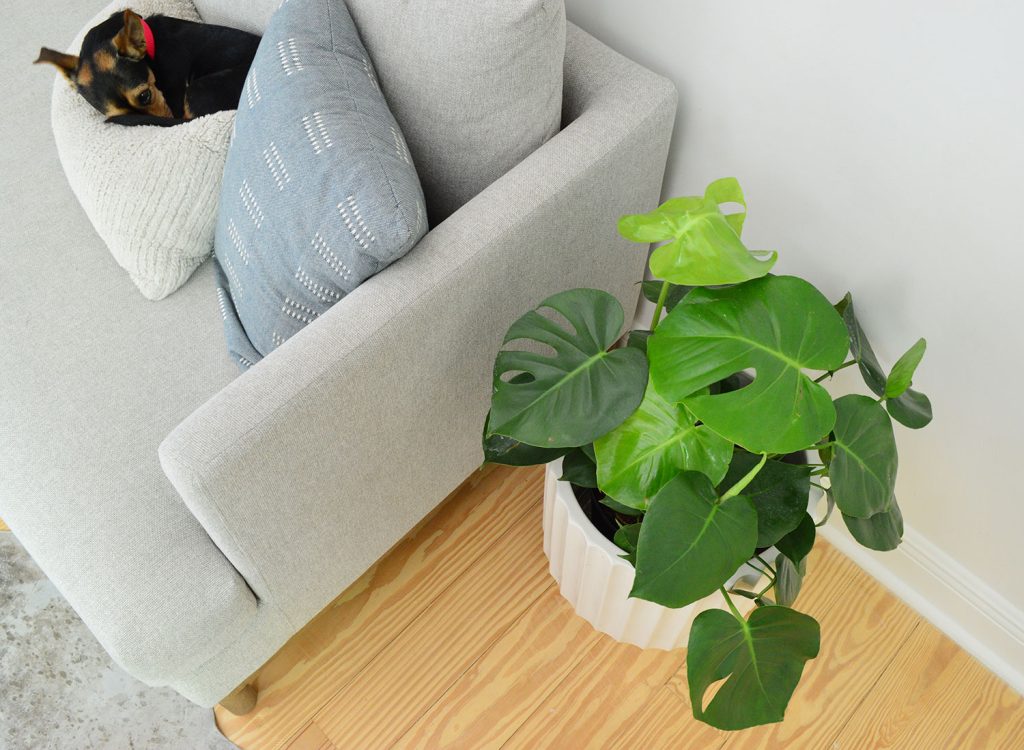
Are you able to propagate a monstera?
Monsteras are nice vegetation for propagation. Use clear, sharp shears to chop a mature leaf or stalk slightly below its node (the place the leaf stem or aerial root meets the stalk). As soon as the lower has a couple of minutes to dry out, submerge the lower finish in water in a transparent vessel. Place the vessel in a shiny spot and alter the water weekly. You may even put a number of cuttings in the identical vase for ornamental association or centerpiece. It’s best to see new roots inside just a few weeks and, after a few month, you’ll be able to switch the roots right into a pot with soil.
Can I develop monstera open air?
Monsteras may be grown open air in USDA Plant Hardiness Zones 10-12, which sadly excludes many of the continental United States (aside from areas of South Florida and coastal Southern California). In case you stay in one in all these zones, plant your monstera in a location with partial, filtered daylight.
Extra Plant Guides
In case you’re on the lookout for extra info on a few of our favourite vegetation (actual and fake!) take a look at a few of these posts beneath:
*This publish comprises affiliate hyperlinks, so we might earn a small fee if you make a purchase order by means of hyperlinks on our website at no extra value to you.
Extra posts from Younger Home Love
[ad_2]